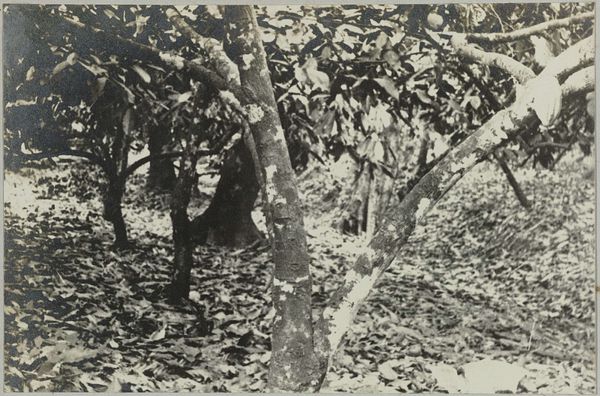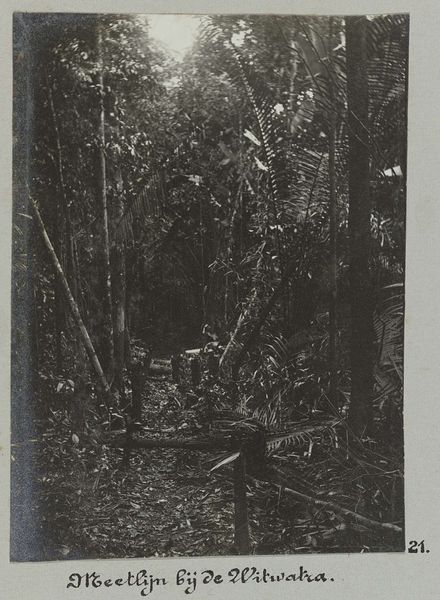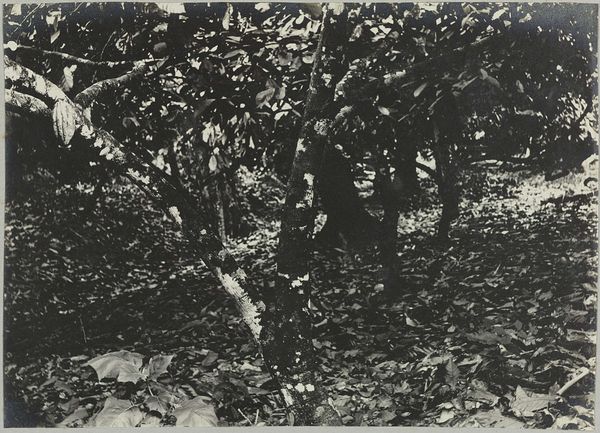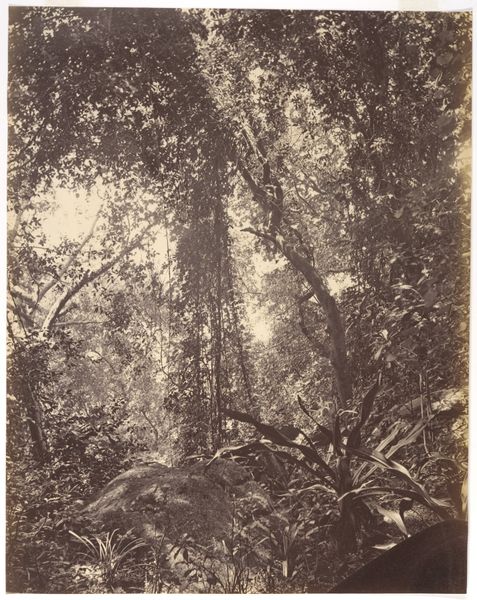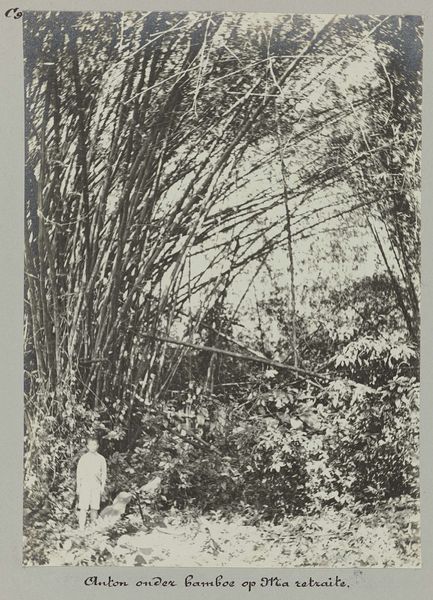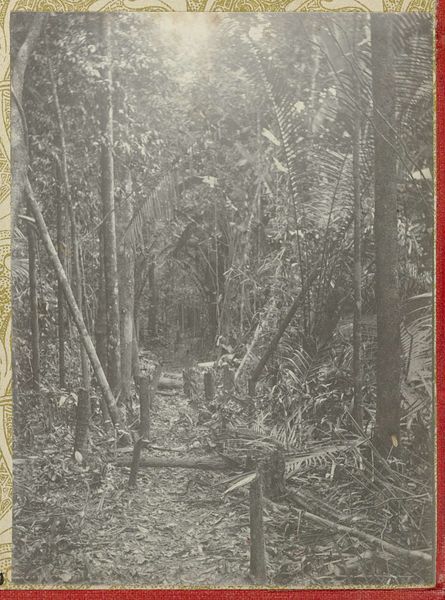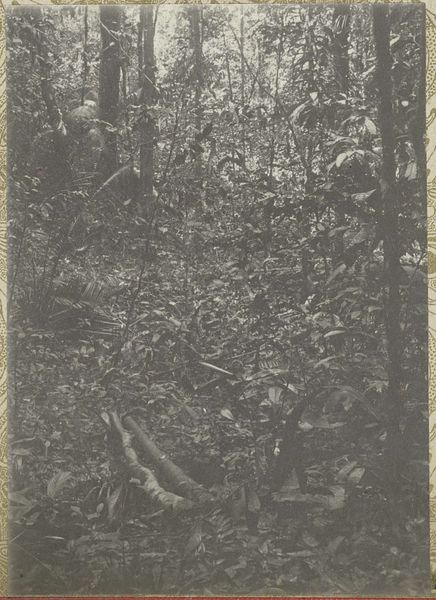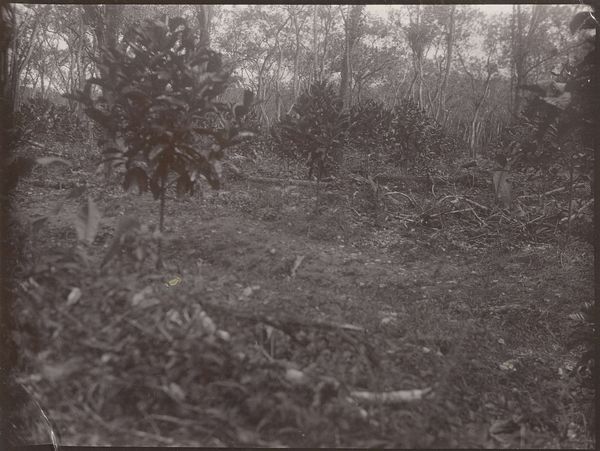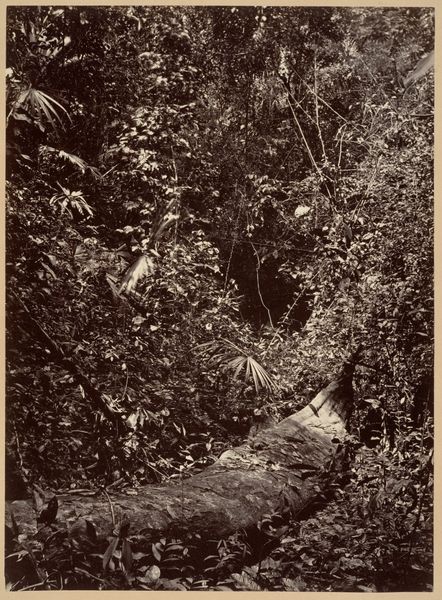
photography
#
still-life-photography
#
landscape
#
photography
Dimensions: height 121 mm, width 172 mm
Copyright: Rijks Museum: Open Domain
Editor: Here we have a photograph titled "Cacao," created by Hendrik Doijer sometime between 1903 and 1910. It’s a detailed, almost stark image of what I presume is a cacao plantation. What strikes me is the way the artist captures the density of the growth and debris on the ground. How do you see this photograph, in terms of its materials and meaning? Curator: It's fascinating to consider this photograph not just as a representation, but as an object born from a specific colonial context. Look at the photographic process itself—the chemicals, the paper, the labour involved. Photography at this time was itself a technology deeply entwined with colonial power, used for documentation, scientific study, and the propagation of certain narratives about the land and its resources. Editor: So you're suggesting the photograph isn't a neutral recording? Curator: Exactly. It presents a controlled image of "Cacao." But whose control are we really seeing? We have to ask, how was this image used? Was it intended to entice investment in plantations? To document the 'progress' of cultivation? The aesthetic choices—the focus, the composition—are not separate from these material and economic realities. They contribute to the overall narrative. Editor: That really shifts my perspective. I was initially thinking about artistic expression, but understanding its connection to labor and colonialism provides a more critical viewpoint. Curator: And what might an art piece created from this Cacao, later sold for large amounts of money mean in such a historical context? Editor: Exactly, now I can't help thinking of the commodity chain, from this plantation to a high-end chocolate bar, and all the hands and resources involved along the way! Thanks for opening my eyes. Curator: Of course! Material considerations open a lot of doors, it's definitely crucial.
Comments
No comments
Be the first to comment and join the conversation on the ultimate creative platform.
